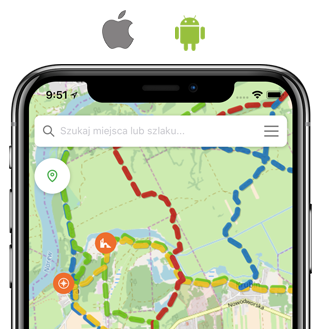Going down the blue trail from Gromadzyń mountain to Ustrzyki Dolne and being in the area of Kolejowa street, we can leave the trail for a few hundred meters just before the stadium to see the Jewish cemetery.
The city development in the 19th century due to the construction of strategic railway line No. 108 caused an influx of people – Jews mostly. The settlers engaged mainly in trade, worked in the oil and craft industry contributing to the development of the town. A synagogue, a school, a ritual bath and a cemetery were built. The outbreak of the World War II caused destruction of the community. The Jews from Ustrzyki were shot in 1942 in two big executions, and the others were taken to death camps in Bełżec and Sobibór. About 350 people from the first execution were buried in a mass grave behind the tracks. The last execution in Ustrzyki was done in January 1943, when 24 Jewish refugees from transport to the Bełżec camp were shot. In the city there was also a ghetto.
After the Jewish community the synagogue and the cemetery have survived to this day. The synagogue dated the 1st half of the 19th century was utterly rebuilt and lost its original appearance (now a city library is located there). Jewish kirkut (cemetery) is located at the foot of Gromadzyń. In 2007 it was sorted out, the path was marked, and the appropriate boards were set. The Jewish cemetery in Ustrzyki Dolne dates back to the 18th century. The gravestones which are now on the Jewish cemetery date back to the 19th and 20th century. Some of them returned here after the Nazis paved them some streets - they were found during road works from 1993 to 1995 (they are in the lower part of the cemetery). There are about 300 matzewahz (Jewish tombstone) in the cemetery.

 Polski
Polski Deutsch
Deutsch Slovenský
Slovenský

